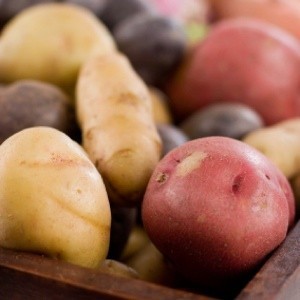 Certain types of potatoes are best for baking. Others are best suited for boiling, making into French fries, chips, salads, or even casseroles. Ultimately, the variety you choose will have a major impact on the taste and quality of your potato dishes. The differences are less about size, color, and time to maturity, and more about the starch content of the tuber.
Certain types of potatoes are best for baking. Others are best suited for boiling, making into French fries, chips, salads, or even casseroles. Ultimately, the variety you choose will have a major impact on the taste and quality of your potato dishes. The differences are less about size, color, and time to maturity, and more about the starch content of the tuber.
A potato's starch to moisture ratio affects its taste and texture when you cook it, so it's important to consider the end use of your potato crop before selecting a variety to grow. Will you be mostly boiling, baking, mashing, or making French fries? A high-starch/low-moisture variety will have a drier, flakier texture. They are the best choices for french fries, roasted potatoes, and mashed potatoes, but because of their low moisture content, will take on liquids and fall apart in soups and stews. Potatoes containing a medium amount of starch are considered "all-purpose" potatoes. They hold their shape better than high-starch varieties, yet share some of the same traits.
While nurseries and garden centers may offer a few types of potatoes for planting in spring, you'll find a wider variety if you order by mail or over the Internet. Some companies even include "rainbow" collections consisting of red, white, and blue varieties, which allow you to experience the best of all worlds. Look for whole seed potatoes, which have a longer pre-planting shelf life and are said to produce up to 20% more than precut sets.
Nutritionists recommend leaving the skin on when cooking potatoes, to preserve the nutrient packed layer that lies just beneath the skin's surface. If you like your potatoes peeled and boiled, consider saving the water you cooked them in to use on your houseplants. Potato water is loaded with the nitrogen, phosphorus, potassium and other minor elements that plants love.